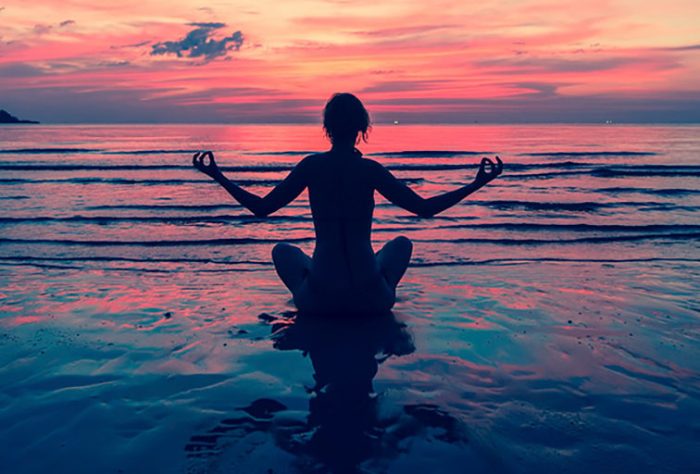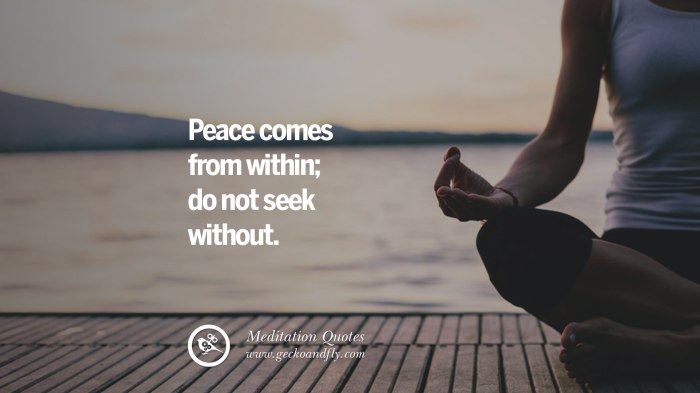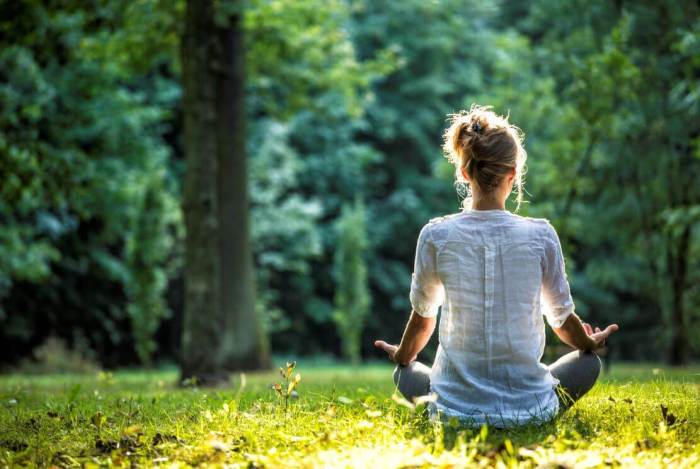As How to Meditate for Finding Peace in Your Mind and Body takes center stage, this opening passage beckons readers with creative twitter thread style into a world crafted with good knowledge, ensuring a reading experience that is both absorbing and distinctly original.
Embark on a journey to discover the profound benefits of meditation for your overall well-being, both mentally and physically. Learn how to cultivate inner peace through simple yet powerful techniques that harmonize the mind and body.
Introduction to Meditation

Meditation is a practice that focuses on training the mind to achieve a state of mental clarity and emotional calmness. Its purpose is to cultivate awareness, concentration, and overall peace within oneself.
When it comes to practicing self-love and acceptance, meditation can be a powerful tool. By taking the time to quiet your mind and focus on positive affirmations, you can cultivate a deeper sense of self-worth. To learn more about how to meditate for practicing self-love and acceptance, check out this helpful guide: How to Meditate for Practicing Self-Love and Acceptance.
Benefits of Meditation for the Mind and Body
- Mental Clarity: Meditation helps to clear the mind of cluttered thoughts and promotes a sense of focus and mental clarity.
- Emotional Well-being: By practicing meditation, individuals can learn to manage stress, anxiety, and emotional reactivity, leading to a more balanced emotional state.
- Physical Health: Meditation has been shown to reduce blood pressure, improve sleep quality, and enhance overall physical well-being.
- Enhanced Self-awareness: Through meditation, individuals can gain a deeper understanding of themselves, their emotions, and their thought patterns.
History and Origins of Meditation Practices
Meditation has been practiced for thousands of years, with roots in ancient Eastern spiritual traditions such as Hinduism and Buddhism. These practices were initially developed as a way to deepen one’s spiritual connection and achieve enlightenment.
Over time, meditation techniques have evolved and spread to various cultures and religions around the world, each with its own unique approach and focus. Today, meditation is widely recognized for its numerous mental, emotional, and physical benefits.
If you want to get the most out of your meditation practice, it’s essential to have a few key tips in mind. From finding a quiet space to setting a regular schedule, there are many ways to enhance your meditation experience. For 8 essential tips to get the most out of meditation, be sure to click on this informative link: 8 Essential Tips to Get the Most Out of Meditation.
Getting Started with Meditation: How To Meditate For Finding Peace In Your Mind And Body

To begin your meditation practice, it’s essential to create a quiet and comfortable space where you can focus and relax. Find a peaceful corner in your home or a serene spot in nature to set up your meditation space. Consider adding elements like cushions, candles, or essential oils to enhance the calming atmosphere.
Did you know that meditation can also help you achieve financial success? By focusing your mind and setting intentions, you can attract abundance into your life. For 6 simple tips on how to meditate for financial success, check out this useful resource: How to Meditate for Financial Success: 6 Simple Tips.
Different Meditation Postures
- Sitting: The most common posture for meditation, sitting cross-legged on a cushion with your back straight helps you stay alert and focused.
- Lying Down: This posture is great for relaxation and body scanning meditations, but be careful not to fall asleep during your practice.
- Walking: Walking meditation involves slow, mindful walking to bring awareness to each step and the sensations in your body.
Focusing on the Breath
As a beginner, focusing on the breath is a simple yet effective technique to anchor your mind during meditation. Sit comfortably with your eyes closed and bring your attention to the natural flow of your breath. Notice the sensation of the breath moving in and out of your nostrils or the rise and fall of your chest and abdomen. Whenever your mind starts to wander, gently bring it back to the breath without judgment or frustration.
Practicing this technique regularly will help you cultivate mindfulness and find peace in your mind and body.
Techniques for Finding Peace in Your Mind

Finding peace in your mind is essential for overall well-being. Here are some techniques to help you achieve a peaceful mental state.
Mindfulness Meditation
Mindfulness meditation involves focusing on the present moment without judgment. By paying attention to your thoughts and sensations, you can calm the mind and reduce stress levels.
Visualization Techniques
Visualization techniques involve imagining peaceful scenes or experiences to create a sense of calm and relaxation. By visualizing yourself in a serene environment, you can help calm your mind and reduce anxiety.
Loving-Kindness Meditation
Loving-kindness meditation, also known as Metta meditation, involves sending love and compassion to yourself and others. This practice can help cultivate feelings of kindness and peace within yourself, leading to inner peace and emotional well-being.
Techniques for Finding Peace in Your Body

When it comes to finding peace in your body, there are various techniques you can incorporate into your meditation practice. These techniques focus on relaxation, stress relief, and releasing physical tension to promote overall well-being.
Body Scan Meditation, How to Meditate for Finding Peace in Your Mind and Body
Body scan meditation is a mindfulness practice that involves focusing your attention on different parts of your body, starting from your toes and moving up to the top of your head. This technique helps you connect with your body, release tension, and promote relaxation.
- Begin by finding a comfortable position, either sitting or lying down.
- Close your eyes and bring your awareness to your toes. Notice any sensations or tension in this area.
- Slowly move your focus up through each body part, one at a time, releasing any tension you may feel.
- Take deep breaths as you scan each body part, allowing yourself to relax and let go of any stress or discomfort.
Progressive Muscle Relaxation
Progressive muscle relaxation is a technique that involves tensing and then relaxing each muscle group in your body. This method helps release physical tension and promotes a sense of calmness and relaxation.
- Find a quiet space where you can sit or lie down comfortably.
- Start by tensing the muscles in your toes for a few seconds, then release and relax them completely.
- Move on to the next muscle group, such as your calves, thighs, abdomen, shoulders, and so on, repeating the process of tensing and relaxing.
- Focus on your breathing and the sensation of relaxation as you go through each muscle group.
Yoga Combined with Meditation
Combining yoga with meditation can be a powerful way to find peace in your body. Yoga helps increase flexibility, strength, and balance, while meditation cultivates mindfulness and inner peace. Together, they create a holistic approach to well-being.
Yoga poses like Child’s Pose, Downward Dog, and Savasana can be particularly beneficial for relaxation and releasing physical tension.
Unlock the transformative potential of meditation as you embrace a serene mind and a rejuvenated body. By incorporating these practices into your daily routine, you pave the way for lasting peace and balance in your life.